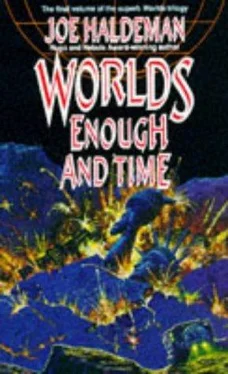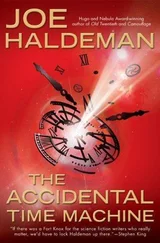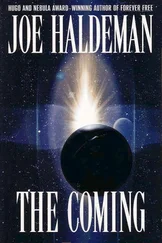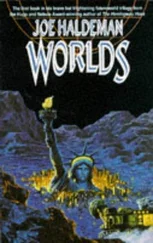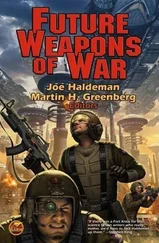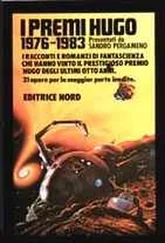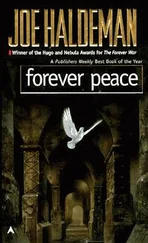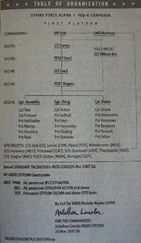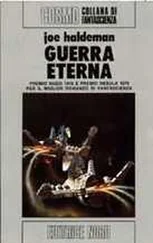SANDRA: I feel great! A little tired from carrying stuff. Here, look at me—hold the camera, Marko.
(The picture bobs around and settles on Sandra, striking a pose. She’s wearing heavy boots and work fatigues, mud-spattered from the knees down. Sleeves rolled up past her elbows, hair a wild mess under a broadbrimmed hat. Wide belt holding a canteen and bolstered pistol.)
SANDRA: Ta-da! Would you want your daughter on the same planet with this wild woman?
O’HARA: How’s Jakob?
SANDRA: He was fine the last time I saw him, couple of hours ago. He’s on the shit committee, setting up the latrines and a shower down by the water plant.
O’HARA: You’re still doing foundations?
SANDRA: Yeah, we’ll be pouring ‘krete about four days. We might be pouring paths after that, if we can improvise forms from something. It’s pretty muddy.
O’HARA: You can’t just knock the floor forms apart?
SANDRA: No, they’re one piece. Wasn’t that great planning? Look, I’ve got to hand the camera over. Love you, Mair!
O’HARA: Love you too, wild woman. Take care of yourself.
The primary landing party were warned repeatedly to “expect the unexpected,” a rule that applies to almost any situation without being particularly useful. “Expect big sticky things to fall out of the sky” would have been more practical.
The helium-using organisms were a puzzle from the first day. There was the basic taxonomic problem: to the question “Animal, vegetable, or mineral?” the answer was yes . Both plant and animal kingdoms had availed themselves of the airbag design, which inexplicably used an inert gas.
The source of the helium would be found the next day, and would open up a new nest of problems, this time for the physical scientists. The first big problem, though, was what to do about big sticky things that fall out of the sky.
It could have happened to Jakob first; he was on guard duty at the time. There were six listening guards, posted around the sleeping pioneers, whose job it was to report to the guard captain anything potentially dangerous-sounding. They had no trouble staying awake.
The first potential danger, though, was almost completely silent. In retrospect, Kisti Seven said she thought she had heard something like the faintest breath of wind, and then a stillness—and then she was blinded, her nightglasses knocked off, and suddenly suffocating, exactly as if someone had thrown a plastic bag over her head, a plastic bag with the smell of swamp water that made a slurping sound and started chewing on her hair.
In response to some fortunate instinct, she had dropped her hand to the handle of the knife on her belt. Against the sticky resistance of the membrane enveloping her from head to knees, she managed to pull the knife from its sheath and feebly stab and slash. The thing made a hissing noise and slid off her. She stepped on the nightglasses, but found her flashlight and played the beam around and caught a glimpse of a shiny thing rolling away. In the process of switching the flashlight to her left hand and unholstering her pistol, she lost sight of the thing, but fired eight shots in its direction anyhow.
The CO 2pistol made eight impressively loud pops, and suddenly there were flashlights everywhere, the sound of guns being cocked, and the guard captain yelling for people not to shoot unless they had a target; nobody in the middle shoot at all!
Kisti had her sodden clothes off fast, toweling the creature’s slime off her exposed face and hands. The doctor gave her a quick once-over and announced that, aside from her being the palest black person he had ever seen, she seemed none the worse for the experience. She told him that it felt like the thing had pulled out some of her hair. He trimmed a sample around the area for lab analysis, and then saturated her hair with pure alcohol and rubbed the antiseptic solvent into her scalp. Then he took a sample of the slime from between her fingers, and had her bathe completely in alcohol. When she was done, her teeth were chattering in the humid heat.
Her trousers were torn below the knee, where the thing had been holding on to her. The doctor found superficial scratches on her calves, not breaking the skin. He took pictures of them for later comparison, just in case, and then dosed her with first-aid spray, which would kill any known bacterium or virus, and maybe some unknown ones.
A search party found the thing and brought it back, draped over two shovels, nearly dead. They dumped it on a sheet of plastic under the bright light in the center of camp. Some people examined it while everybody else examined the dark overcast sky, wearing hats.
The central part looked like a crab or a spider about half a meter wide, with twelve muscular tentacles that fanned out into a frame for the transparent skirt of the gasbag. Inflated, it probably made a globe about two meters in diameter, with pods ballooning out between the tentacle ribs. It could obviously move pretty fast on the ground, deflated, hauling itself along with the tentacles, which had retractable talons.
One of Kisti’s, or somebody’s, pellets had struck the central crab part; an opalescent watery fluid puddled underneath it. The skirt had several knife punctures and a long rip that partly severed a tentacle. Two different fluids, one watery and one yellow and viscous like honey, dripped from that wound.
Twelve was the animal’s magic number. The crab part had twelve simple eyes, spaced evenly around the carapace, and twelve fingers or articulated claws in two rows underneath, surrounding a mouth with twelve teeth like blunt tusks. The claws were imbedded in a nest of hundreds of writhing cilia that slowly stopped moving as they watched. The zoologists decided to put off dissection until the morning light.
The next morning, everybody not involved with the dissection joined Sandra’s crew in the suddenly urgent business of roof raising. The ‘krete floors would be dry enough to sleep on by nightfall, a word that had a new connotation.
A review of satellite and drone data came up with four possible pictures of the “floating spiders.” At least they were infrared blobs with central blobs that were there in one frame and gone in a frame taken a few hours later. All the pictures were nighttime. The blobs hadn’t shown up on the first analysis because they were only slightly warmer than the ground.
It may have homed in on its victim’s body heat. Dissection didn’t reveal any sense organs that might be used for batlike sonar or sharklike detection of electrical activity. It didn’t seem to have ears; its eyes were little more than light detectors. Its brain was less than a centimeter wide.
The skirt itself, when inflated, was probably a delicate sense organ. Slight updrafts would indicate sources of heat on the ground. The cilia seemed to have chemical sensors, like olfactory receptors, that would help the spider differentiate between a warm rock and a potential meal.
The digestive system was relatively simple, the mouth used for both ingestion and excretion (when Seven learned that, she washed her hair again). More than half the volume of the ropy tentacles was bladder rather than muscle, and there was a sphincter under each tentacle claw. The bladders were full of sulfurous-smelling water that evidently served as ballast.
The next day, an exploration party less than two kilometers from the camp worked their way over a ridge into a valley of rank yellow and orange vegetation, and smelled something that reminded them of the floating spider. Weapons drawn, they crept up on a bubbling swamp.
One of the creatures was splayed across the water, its tentacles moored to various anchors. It was sagging, partially inflated. It had stationed itself over a spot where a steady line of bubbles broke the surface.
Читать дальше
